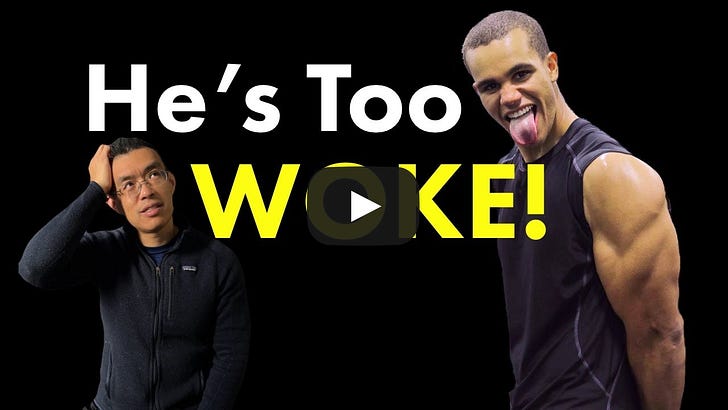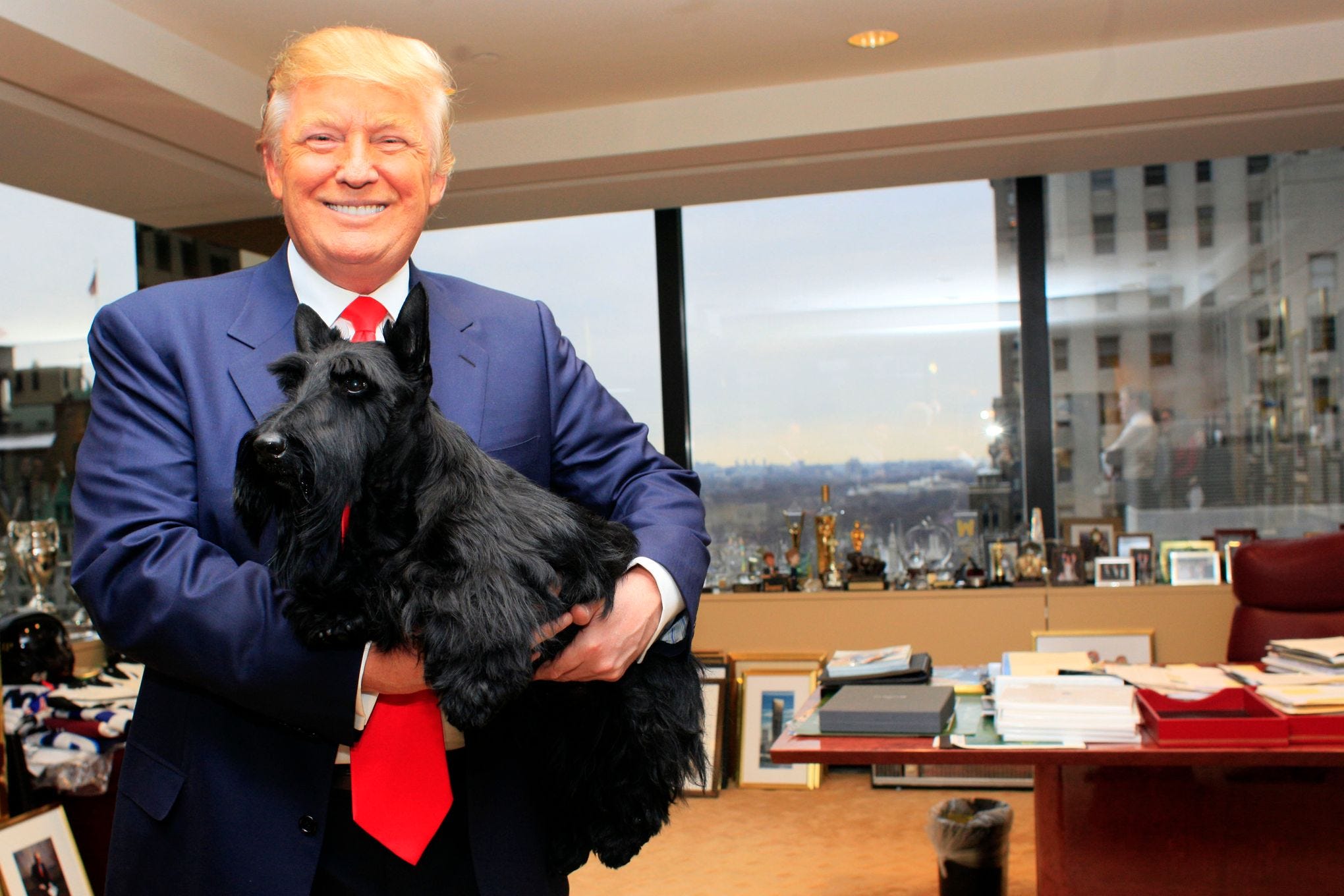|
How To Stop Trump From Killing Dogs
Politicians send billions of taxpayer dollars to torture animals in labs. How do we convince them to stop?
If there’s one thing Americans can agree about, it’s that we should stop killing dogs. Democrats mocked Kristi Noem when she admitted she killed her dog Cricket. Republicans assailed immigrants when rumors spread that Haitians were eating pets. The strange thing about this seeming bipartisan consensus, however, is that it’s an illusion. The truth is that both parties have quietly supported the torture and murder of tens of thousands of dogs.
I am speaking, of course, of the dogs used in labs. Our government sends billions in taxpayer dollars to fund useless experiments on animals, including forcing beagles to inhale plutonium gas as their skeletons melt away. Many of these abuses are indisputably illegal. Yet, at the behest of the biomedical industry, both political parties in the United States have not just funded the cruelty but targeted activists for exposing the abuse.
It’s hard to make sense of this. How can Trump condemn Haitians for eating pets while standing side-by-side with the animal torturer Elon Musk? How can Harris mock Kristi Noem while praising her mentor Sen. Diane Feinstein, who put activists in prison for trying to help dogs?
There are many explanations for the hypocrisy, from corporate influence to corruption. But in this blog I want to focus on a more important question: how do we get the politicians to stop funding the violence?
The prevailing theory is persuasion: we simply have to persuade politicians with the right arguments or facts that animal experiments are wrong. But this theory is wrong. Human beings, especially in groups, do not operate by reason or evidence but by social momentum. This is how Kamala Harris can flip on fracking, while repeating over and over “my values are the same.” And how Donald Trump can make a sudden retreat on abortion while still claiming the mantle of “pro-life.” Harris and Trump were not persuaded by reason or evidence; they moved with the political tides.
Another theory is power: we have to build enough power that politicians, no matter their individual beliefs, are forced to ban the experiments. This gets closer to the truth, as a politician who ignores power won’t be long in office. But one of the odd things about building power is that doing so often just reinforces the status quo. This is because the compromises we make, in seeking power, often leave us helpless to use that power to make change. Take Harris’s approach to fracking; while flipping on fracking may help her achieve power by winning Pennsylvania, it will also undermine her ability, once in office, to actually use that power to stop climate change.
The best theory for those seeking change is people: specifically, networks of people mobilized behind change. The renowned social scientist Duncan Watts has used the metaphor of a forest fire to explain the power of these social networks. A dry leaf, by itself, won’t do much to trigger a fire. But if enough dry leaves cluster in the right spot, together they can spark a fire that transforms the entire system. Ordinary people, connected in a network, are the dry leaves in Watts’ metaphor. If enough of them cluster in the right place, and take action for a cause, they can create the conditions for a “social fire” – a mass movement that changes everything it touches. This is how movements have transformed the political landscape on issues ranging from racial justice to gay rights.
It’s not any sort of network, however, that can create the conditions for a social fire.
The network must be connected. The fire from one dry leaf must be able to jump to the next; if the leaves are disconnected from one another, they cannot start a larger fire. This is what happens when activists try to “go it alone” or divide their attention to too many different campaigns.
The network must be unified. If one leaf burns hot, and the next one is in a freeze, it will stall the network from spreading a social fire. This is what happens when activists fight amongst one another; they stop energy from spreading from one person to the next. (Check out this conversation I had with Vegan Gains, for example, on why we need to stop arguing about Gaza.)

And finally, the network must be robust. If a slight breeze can put out the blaze easily, then a social fire will never start. In contrast, when networks survive the efforts to put them out, they often become even stronger from the backlash. A wind that might put out a small blaze can become instrumental to spreading a more robust fire. The same is true of repression of social movements. While weak movements die from repression, robust movements harness repression – such as the criminalization of activism – to make even greater change.
Now we can come back to the original question: how we do we convince politicians to stop the mass killing of dogs? The answer is a network of people, and one that is connected, unified, and robust. That is, unfortunately, much harder than it seems. We live in a world where people are more lonely, distracted, and afraid than they’ve been in a long time; these are the restraining forces of social change.
But those restraining forces aren’t permanent. Indeed, there are tried and true ways to overcome those restraining forces through effective community-building.
That is, however, a blog for another day. In the meantime, ask yourself if you’re doing the things that must be done to stop politicians from funding abuse. Are you going it alone, or are you connecting with others? Are you promoting movement unity, or are you engaging in online fights? And are you helping the movement build resilience, or running away when there’s backlash?
The next few days will be an opportunity for all of us to answer those questions. On October 23, after years of prosecution, we will turn the tables on one of the nation’s largest dog breeding facilities and ask for a special prosecutor to investigate their crimes. If we win, 3000 dogs will be saved. But to win, we’ll need your help. We’ll need you learn the important lessons on how to convince politicians to stop the abuse.
What’s up this week?
The hearing to appoint a special prosecutor to bring criminal charges against Ridglan Farms is happening on Wednesday, October 23 — and we need your help. On social media, we will be asking the governor of Wisconsin, Tony Evers, to take action to protect the dogs. Sign up here if you want live updates and more details on how to get involved.
It’s crunch time, and several important initiatives for animals are on the ballot around the nation. Two of particular importance are the factory farm ban in Sonoma County, California and the slaughter ban in Denver, Colorado. If you know people in either region, ask them to vote! I’ll providing some thoughts on these initiatives in the coming weeks. I think many people will be surprised by my take!
There have been some fascinating developments in Tracy Murphy’s case which suggest the tide is shifting in favor of animal rights. The local paper published an op-ed condemning the case against Tracy and demanding an investigation of prosecutorial misconduct. Then, just a few days ago, Farm Sanctuary President Gene Baur published a piece asking why so many in the county were threatened by the idea that animals could be friends, rather than food. While I wish the coverage in the New York Times had been stronger, the extensive media response shows once again the power of court cases to amplify the story of animals.
That’s all for now!
Thank you for reading The Simple Heart! To help us reach more people, become a donor today.


